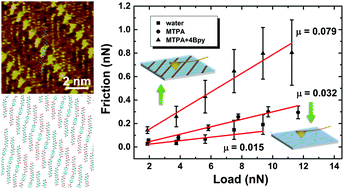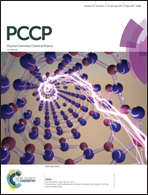Interfacial assembly structures and nanotribological properties of saccharic acids
Abstract
Saccharides have been recognized as potential bio-lubricants because of their good hydration ability. However, the interfacial structures of saccharides and their derivatives are rarely studied and the molecular details of interaction mechanisms have not been well understood. In this paper, the supramolecular assembly structures of saccharic acids (including galactaric acid and lactobionic acid), mediated by hydrogen bonds O–H⋯N and O–H⋯O, were successfully constructed on a highly oriented pyrolytic graphite (HOPG) surface by introducing pyridine modulators and were explicitly revealed by using scanning tunneling microscopy (STM). Furthermore, friction forces were measured in the saccharic acid/pyridine co-assembled system by atomic force microscopy (AFM), revealing a larger value than a pristine saccharic acid system, which could be attributed to the stronger tip-assembled molecule interactions that lead to the higher potential energy barrier needed to overcome. The effort on saccharide-related supramolecular self-assembly and nanotribological behavior could provide a novel and promising pathway to explore the interaction mechanisms underlying friction and reveal the structure–property relationship at the molecular level.


 Please wait while we load your content...
Please wait while we load your content...